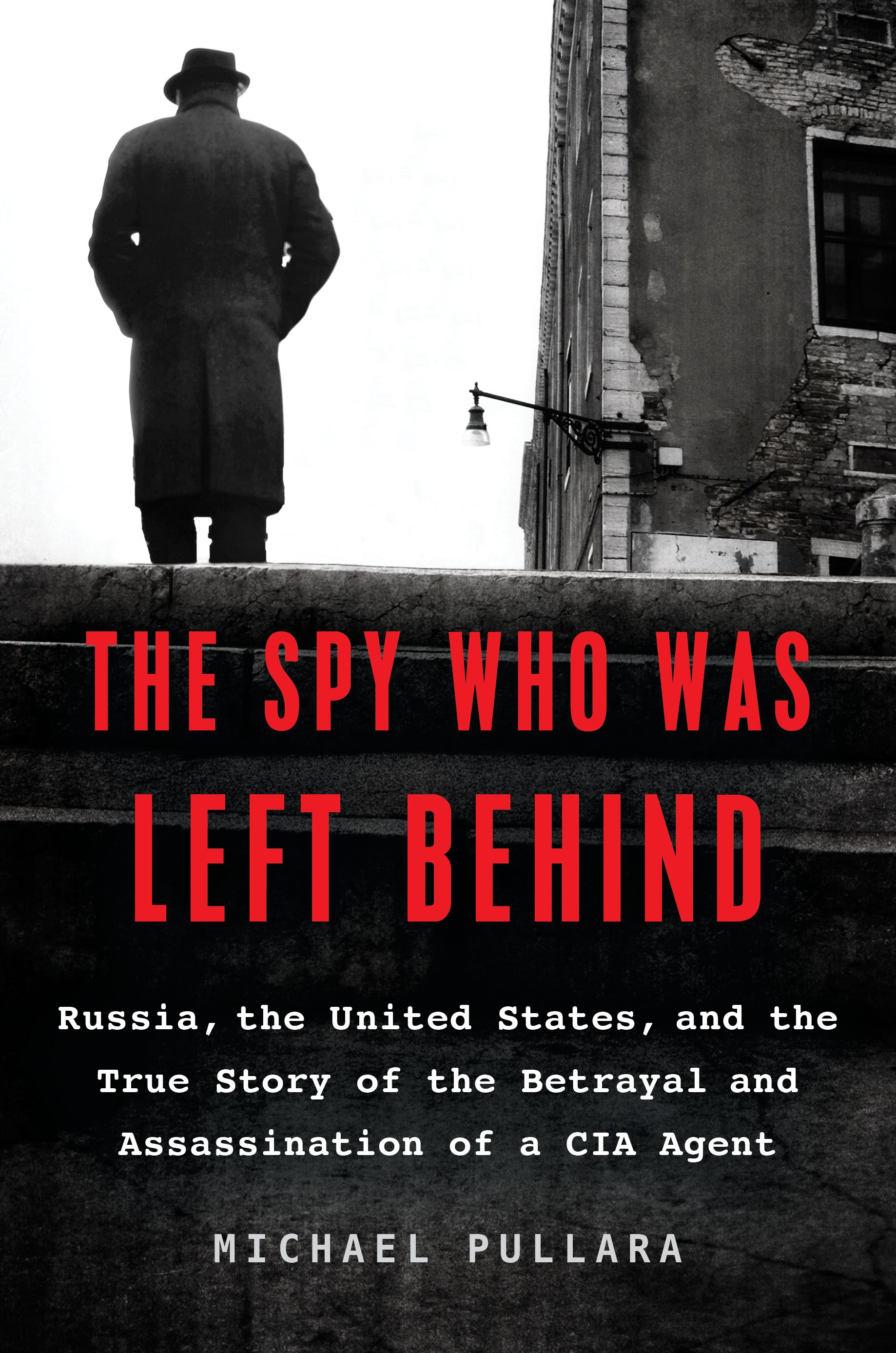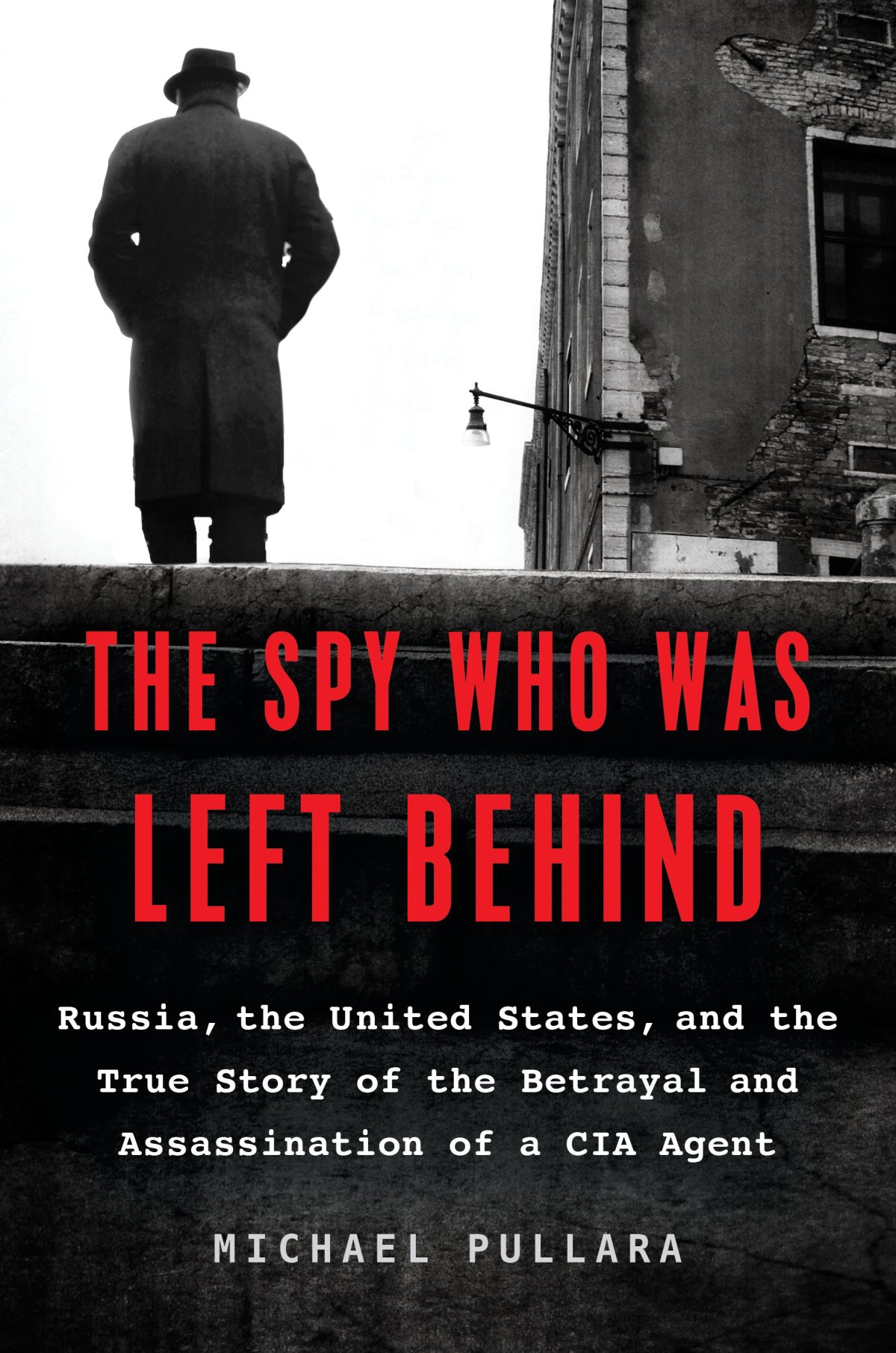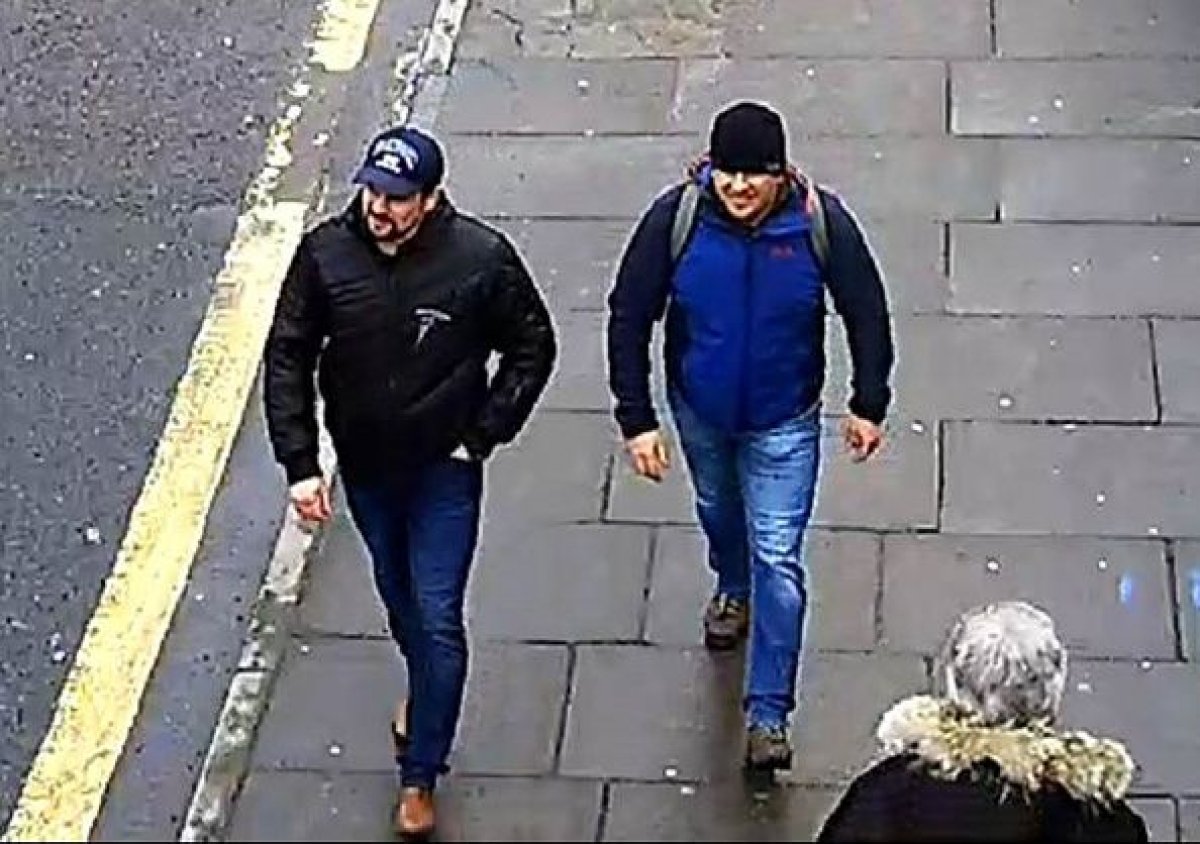
On August 8, 1993, Freddie Woodruff, the CIA branch chief in the former Soviet Republic of Georgia, was shot in the head and killed. He had been traveling in the car with Eldar Gogoladze, the bodyguard of the former Soviet foreign minister Eduard Shevardnadze, who was then part of a four-man governing council that ruled the newly independent Georgia.
Accompanying Woodruff and Gogoladze were two Georgian women, one of whom turned out to be a Russian military spy and mafia assassin.
Woodruff had arrived in the country in early June of 1993 to help train the country's security forces. It was the first such mission in the former Soviet Union.
Georgia was a lawless nation at the time. Several years earlier, the country had emerged from the wreckage of the Soviet Union and was still overrun with Russian intelligence agents. Crime was rampant and electricity sporadic as rival gangs and paramilitaries competed for influence. Georgia was fighting a separatist insurgency in the breakaway region of Abkhazia. The CIA had also identified the country as a major drug smuggling route.
After Woodruff was shot and killed, then-CIA director James Woolsey traveled to Georgia personally to claim the dead body. Georgian officials determined that the murder had been an accident and Woodruff had been killed by a stray bullet shot by a drunken soldier who was unaware that there was an American in the car. A trial was held in 1994 and a young man named Anzor Sharmaidze was sentenced to 15 years of hard labor for the murder.
But Texas lawyer Michael Pullara was not convinced by this explanation. Pullara, a family friend of the Woodruffs who had gone to school with Freddie Woodruff's sister, was motivated to get to the bottom of the murder. After carefully analyzing the evidence presented during Sharmaidze's trial in Georgia and issuing numerous Freedom of Information Act (FOIA) requests to the FBI and CIA, Woodruff became convinced that Sharmaidze was innocent and that Russia was behind the assassination of the CIA agent.
In his new book The Spy Who Was Left Behind, Pullara describes in vivid detail his investigation, which spanned decades and borders, and how he linked Woodruff's murder to Russia's Special Forces and to veteran CIA agent Aldrich Ames, who was convicted of spying for the Soviet Union just months after Woodruff was killed.
Pullara succeeded in having Sharmaidze released from prison in 2008. In 2013, Georgia's justice minister Tea Tsulukiani said she believes the case "had not been properly investigated."
In a conversation with Newsweek, Pullara describes his hopes for the new book and why he believes it took so long for the truth about Woodruff's death to be discovered.

How long did this investigation take?
I started in 1993, literally the day after the murder was presented in The New York Times. I made my first FOIA request in 1994 and I made my first trip to Georgia in 2004. I got Anzor out of prison in 2008. And I was still making trips and trying to reverse the conviction until 2013. I would say, in terms of actively pursuing the case, 2004 to 2009 was the most active period.
It never occurred to me to write a book until at one point in the process the State Department accused me of doing the whole project as a publicity stunt in order to write a book. I guess I have them to thank.
After Anzor was released from prison he called me and asked me for money. One of my solutions for getting him money was buying his rights to the book. I paid him upfront. I bought the rights up front in cash, and I will give him some of the proceeds from the book. I wanted him to feel like he was getting fair value for selling his experience.

If Aldrich Ames was to blame for the murder, why do you think the CIA would want to cover that up? Would it not be easier to pin the murder on a traitor, someone who had spied for the Soviet Union?
I have my suspicions and conclusions about that. First, I have nothing but enormous respect for the professionals at the [CIA] agency and the [FBI] bureau. The closer I got to their work the more astounded I was at their excellence and expertise.
Both the agency the bureau already knew that Ames was a spy at the time that they let him go to Georgia. The decision to let people go to Tbilisi in 1993 was part of the Ames investigation. They had already searched his home and office, had already installed audio and video surveillance, and were already following him 24 hours a day.
The CIA had already briefed [former national security adviser] Tony Lake and Lake had already briefed [former President] Bill Clinton. The DOJ had already opened a criminal case against Ames for espionage. The investigation of Ames was largely complete.
They were allowing [Ames] to continue to be free because they had more losses than could be explained by Aldrich Ames alone, and I believe they made the calculated decision to let him go free and see if he led them to another spy.
So they let this unwitting CIA officer, Woodruff, be exposed to Ames. It was generally reported that Ames and Woodruff had an angry confrontation in Tbilisi.
While he was in Tbilisi, Ames and Woodruff spent a ton of time together: a day driving to the Russian border and a night getting drunk. After that night with Ames, Woodruff was morose and visibly distracted. And he was later observed having an angry confrontation with Ames at a Tbilisi bar. No one knows exactly why they argued, but the context suggests that on their night out Ames had gotten drunk and said something that made Woodruff suspicious.
But if the agency knows that Ames is a spy and they know there was a confrontation, and they aren't protecting Woodruff from what he may have found out, I think there is responsibility there that they are trying to deal with.
The agency had trained Woodruff to be suspicious but did not protect him from the possibility that his suspicion might fall on Ames. The agency had intentionally exposed Woodruff to a known traitor without a plan to protect him if he somehow uncovered evidence of Ames's treachery. I think this was an error in judgment that contributed to Woodruff's death and to the agency's decision to cover up the murder.
If the FBI had been permitted to perform a thorough investigation, the evidence would certainly have led back to Ames and, in short order, to the suspect decision by the bureau and the agency to allow Ames to travel to the former Soviet Union. But by waiting to arrest Ames until after a patsy had been convicted of the murder, the men and women who had made that suspect decision distracted the public and avoided all accountability for their part in Woodruff's death.
Ames would have known that he had committed a serious indiscretion by revealing himself to Woodruff. His only recourse was to contact his Russian handlers immediately and obtain either asylum or assistance. This would have been easy to do because Ames wasn't being followed in Georgia and because there were lots of KGB and GRU agents in Tbilisi.
But instead of exfiltrating Ames across the border to a sanctuary in Russia, his handlers decided to protect Ames by killing Woodruff before he left the country. You see, the Russians knew CIA culture and they knew that Woodruff would wait to report his suspicions until he got back to headquarters in Langley, Virginia. This meant the Russians had a two-week window in which to assassinate him.
When Ames was finally arrested in February 1994 — a week after Anzor Sharmaidze was convicted of killing Woodruff — the FBI began immediately to investigate whether there was a connection between Ames and the Woodruff murder. However, they were frustrated in pursuing that investigation. The arrest of Ames had created a new imperative — that the traitor not be accused of murdering an American. He could kill a bunch of Russians and still go to prison for life. But if he caused the death of a CIA colleague then it would be very hard for him to avoid the death penalty. And the CIA needed Ames alive so they could debrief him over the next 30 years, a process known as "walking the cat backwards." The agency knew that if wanted to protect Ames from the death penalty, then they had to protect him from being accused of Woodruff's murder.
So political convenience met political necessity. And Freddie Woodruff got left behind.
Have people in the CIA confirmed this theory?
Yes. The book has been read by retired FBI special agents and retired CIA operations officers—all of whom had first-hand knowledge of the Woodruff murder. They have endorsed its conclusions enthusiastically. In one case a retired CIA officer said, "You have solved it."

Why would Georgia's government go out of the way to frame someone and cover up the incident? Do you have a sense of who was behind that and why?
At the time of the murder, Georgia was governed by a four-person council. Former Soviet foreign minister Eduard Shevardnadze was the most junior member of that council. The real power was held by Jaba Ioseliani, a mafia godfather and the head of 5,000 man army called Mkhedrioni, or the Horsemen. Ioseliani and his army were known to have close ties to Russian military intelligence and to two of the three people in the car with Woodruff.
If there had been a real investigation into the murder then it would have exposed GRU involvement — and that would not have been in Ioseliani's best interest. Before he or Russia allowed anything like that to happen, they would have pushed Shevardnadze out of government and America out of Georgia.
When you're talking about the government of Georgia in 1993 and 1994, you aren't talking about a unified entity. You are looking at an entity dominated by different interest groups. However, those interest groups were in general agreement about the murder of Freddie Woodruff. They all wanted to make this problem go away and at the same time to satisfy the US — because even if you're Mkhendrioni you still wanted American money to keep coming into the country.
But as it turned out, satisfying America wasn't all that hard. Shevardnadze told me that when he met [CIA Director] Woolsey at the airport to deliver Woodruff's body, the American never mentioned the murder. And on the basis of this startling omission, Shevardnadze concluded that the US just wanted the whole thing to go away.
So that's exactly what he did.
Now that the book has been published, what do you hope will come out of it?
I think that Freddie and Anzor and the Woodruff family have all been publicly dishonored. I am hopeful that the book will end that dishonor. I think Freddy was a hero but has never been accorded the honor of that status. I would like to believe the agency will study this case and work to mitigate risks for future agents caught in a similar situation.
But my greatest ambition for this is to persuade people that they can make a difference. That irrespective of the issue, if you care about something enough you can have an impact. You are not limited to the largely sad act of liking something or re-tweeting something. I'm here to tell you that you can step onto the stage and have an effect.

Do you think the case of Freddie Woodruff is similar to contemporary cases like the poisoning of Sergei Skripal in the U.K. or the death of Alexander Litvinenko? Does this fit a pattern of Russia targeting spies abroad?
There are similarities between the murder of Freddie Woodruff and the poisonings of Sergei Skripal and Alexander Litvinenko. In all three cases, Russia did not make any significant effort to hide their role in the crimes. The fact of their ruthlessness appeared to be one of the main things they were trying to communicate. In all three cases, Russia violated the sovereignty of an ostensibly friendly nation in order to kill people. This suggests that Russia believes that it has some supranational right to exercise its will against third parties any place on the planet. And in all three cases, a short-term intelligence objective took precedence over a long-term national interest. In the end, Russia appears to have lost more than it gained.
The commonalities among these crimes make it clear that our need for institutions like the CIA and NATO is not because Russia was communist, but because Russia is Russia.
Uncommon Knowledge
Newsweek is committed to challenging conventional wisdom and finding connections in the search for common ground.
Newsweek is committed to challenging conventional wisdom and finding connections in the search for common ground.
About the writer
Cristina Maza is an award-winning journalist who has reported from countries such as Cambodia, Kyrgyzstan, India, Lithuania, Serbia, and Turkey. ... Read more
To read how Newsweek uses AI as a newsroom tool, Click here.








